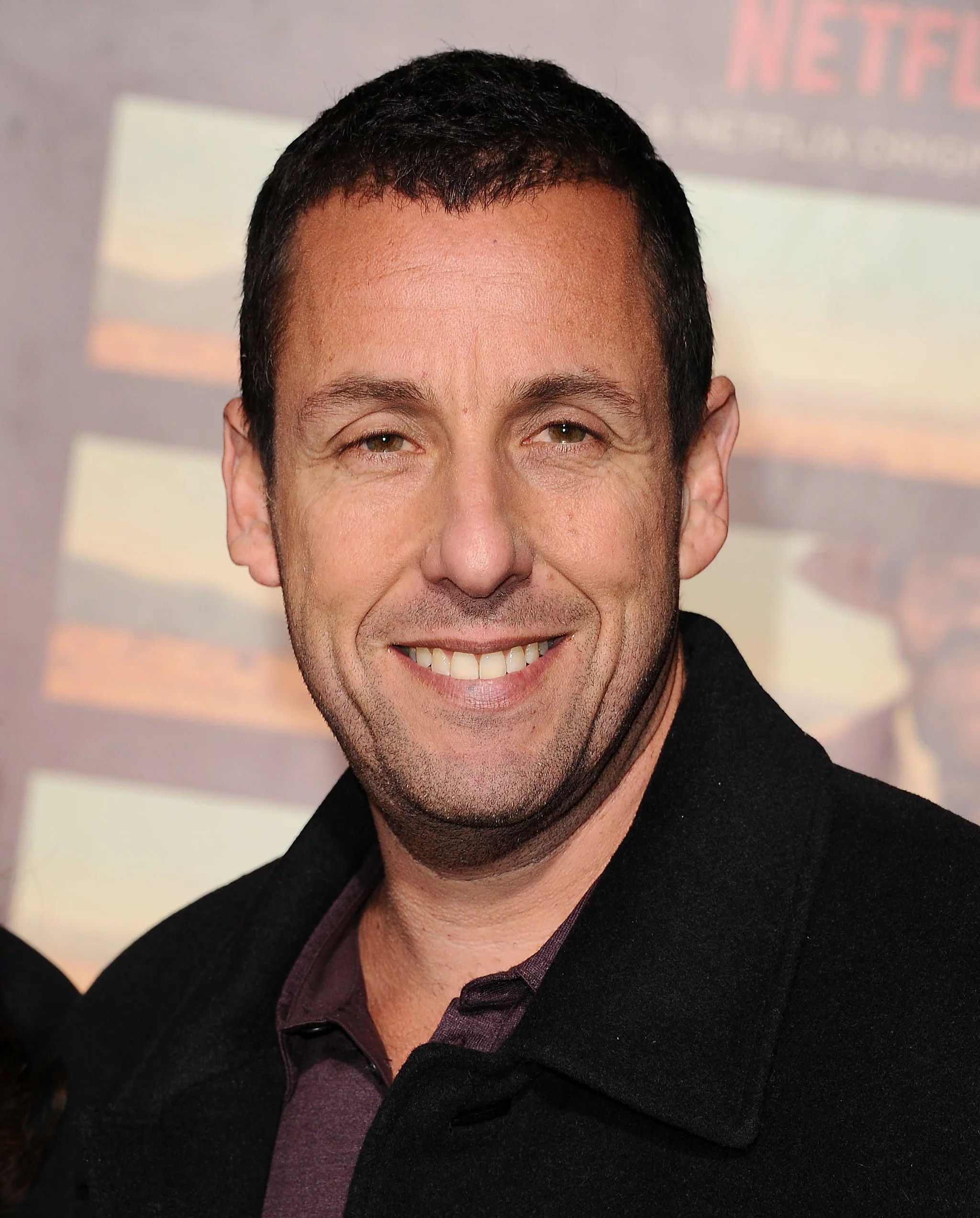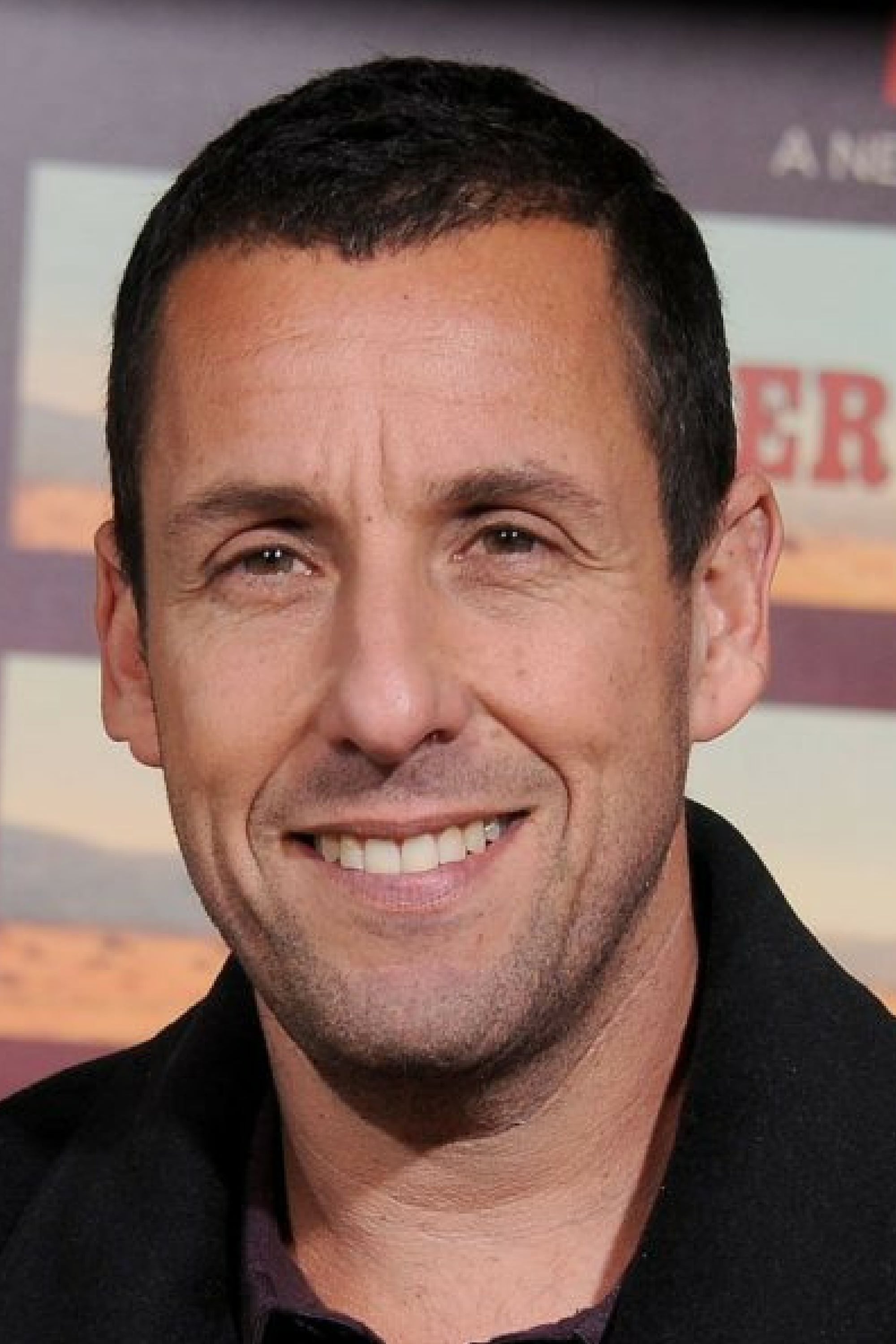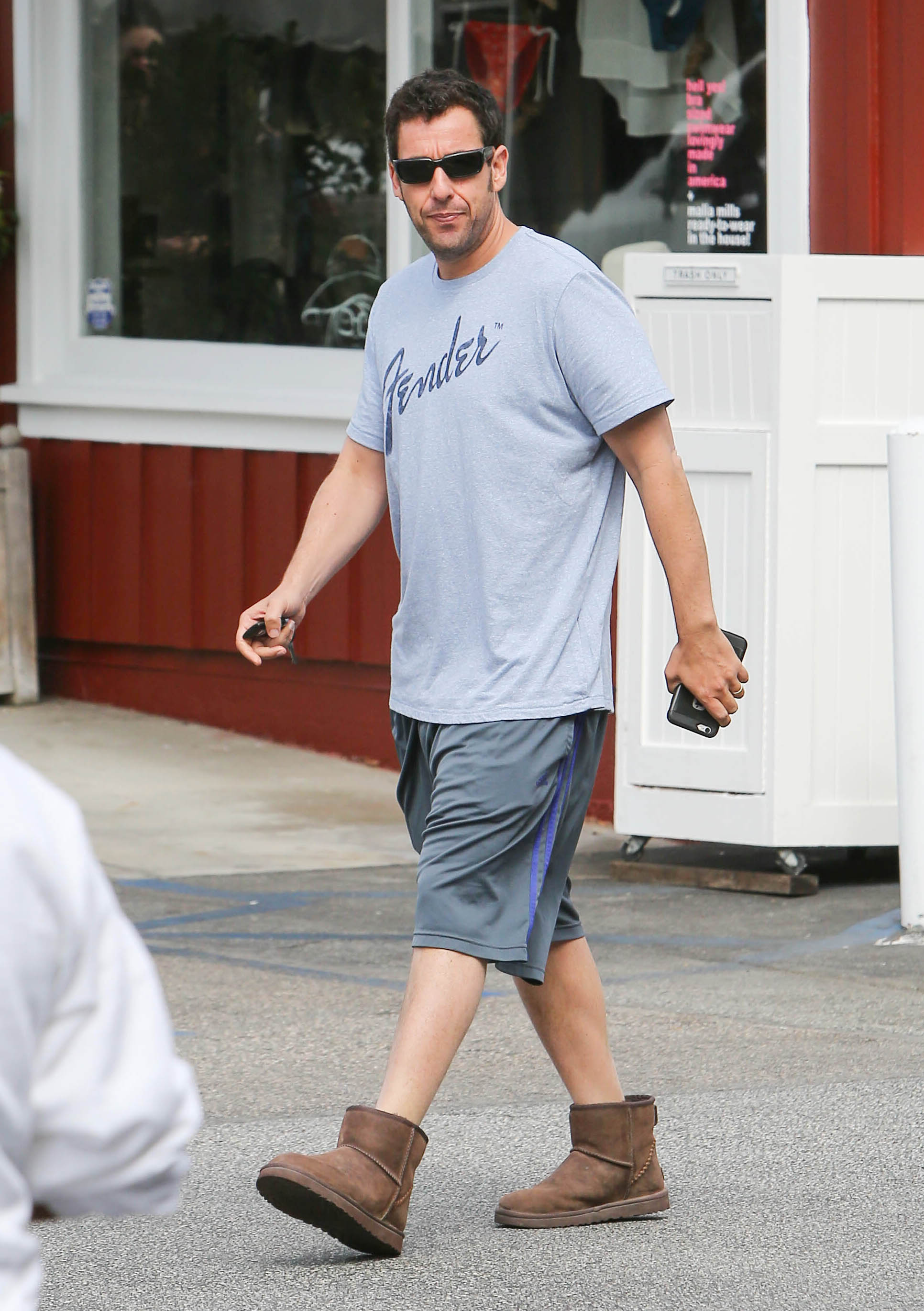"Adam Sandler Dead" is a false and misleading claim that has been circulating online. It is important to be aware that this claim is not true and that Adam Sandler is alive and well.
The spread of false information can be harmful, as it can lead people to believe things that are not true. In the case of the "Adam Sandler Dead" hoax, this could lead people to worry unnecessarily about Adam Sandler's well-being or to believe that he has actually died.
It is important to be critical of the information that you see online and to only trust information from credible sources.
Adam Sandler Dead
The claim that "Adam Sandler Dead" is false and misleading. Adam Sandler is alive and well.
- False claim
- Misleading information
- Celebrity death hoax
- Unreliable sources
- Spread of false information
- Importance of critical thinking
- Trustworthy sources
- Verified information
It is important to be aware of the dangers of false information, and to be critical of the information that you see online. Only trust information from credible sources, and be aware of the possibility of hoaxes and misinformation.
Personal details and bio data of Adam Sandler:
| Name | Adam Sandler |
| Date of birth | September 9, 1966 |
| Place of birth | Brooklyn, New York, U.S. |
| Occupation | Actor, comedian, screenwriter, and producer |
| Years active | 1987present |
| Spouse | Jackie Sandler (m. 2003) |
| Children | Sadie Madison Sandler and Sunny Madeline Sandler |
False claim
A false claim is a statement that is not true. False claims can be made intentionally or unintentionally. In the case of "Adam Sandler Dead," the false claim was likely made intentionally to spread misinformation and cause harm.
- Attention
False claims can be used to attract attention and get people talking. In the case of "Adam Sandler Dead," the false claim quickly spread across social media, generating a lot of buzz and discussion.
- Misinformation
False claims can be used to spread misinformation and deceive people. In the case of "Adam Sandler Dead," the false claim could have led people to believe that Adam Sandler had actually died, causing unnecessary worry and distress.
- Harm
False claims can be used to harm people's reputations and careers. In the case of "Adam Sandler Dead," the false claim could have damaged Adam Sandler's reputation and caused him to lose work.
- Legal consequences
Making false claims can have legal consequences. In some cases, people who make false claims can be sued for defamation or fraud.
It is important to be aware of the dangers of false claims and to be critical of the information that you see online. Only trust information from credible sources, and be aware of the possibility of hoaxes and misinformation.
Misleading information
Misleading information is information that is not accurate or complete, and that can lead people to believe something that is not true. In the case of "Adam Sandler Dead," the misleading information was the false claim that Adam Sandler had died. This claim was spread across social media, and many people believed it to be true.
Misleading information can be harmful because it can lead people to make decisions based on false information. In the case of "Adam Sandler Dead," the misleading information could have led people to worry unnecessarily about Adam Sandler's well-being, or to believe that he had actually died.
It is important to be aware of the dangers of misleading information and to be critical of the information that you see online. Only trust information from credible sources, and be aware of the possibility of hoaxes and misinformation.
Celebrity death hoax
A celebrity death hoax is a false claim that a celebrity has died. These hoaxes can be spread through social media, news outlets, or other channels. The "Adam Sandler Dead" hoax is one example of a celebrity death hoax.
- Attention
Celebrity death hoaxes can be used to attract attention and get people talking. In the case of the "Adam Sandler Dead" hoax, the false claim quickly spread across social media, generating a lot of buzz and discussion.
- Misinformation
Celebrity death hoaxes can be used to spread misinformation and deceive people. In the case of the "Adam Sandler Dead" hoax, the false claim could have led people to believe that Adam Sandler had actually died, causing unnecessary worry and distress.
- Harm
Celebrity death hoaxes can be used to harm people's reputations and careers. In the case of the "Adam Sandler Dead" hoax, the false claim could have damaged Adam Sandler's reputation and caused him to lose work.
- Legal consequences
Making false claims about a celebrity's death can have legal consequences. In some cases, people who make false claims can be sued for defamation or fraud.
It is important to be aware of the dangers of celebrity death hoaxes and to be critical of the information that you see online. Only trust information from credible sources, and be aware of the possibility of hoaxes and misinformation.
Unreliable sources
Unreliable sources are sources of information that are not credible or trustworthy. They may contain false or misleading information, and should not be relied upon when making important decisions.
The "Adam Sandler Dead" hoax is a good example of how unreliable sources can spread false information. The false claim that Adam Sandler had died was spread across social media by unreliable sources, such as fake news websites and social media accounts. Many people believed the claim to be true, simply because it was being reported by these unreliable sources.
It is important to be aware of the dangers of unreliable sources and to be critical of the information that you see online. Only trust information from credible sources, such as reputable news organizations, government agencies, and academic institutions.
By being aware of the dangers of unreliable sources, you can help to prevent the spread of false information and protect yourself from being misled.
Spread of false information
The spread of false information is a serious problem that can have a significant impact on our lives. False information can be spread through a variety of channels, including social media, news outlets, and even word of mouth. The "Adam Sandler Dead" hoax is a good example of how false information can spread quickly and easily.
The false claim that Adam Sandler had died was spread across social media by unreliable sources, such as fake news websites and social media accounts. Many people believed the claim to be true, simply because it was being reported by these unreliable sources. This shows how easy it is for false information to spread, even when there is no evidence to support it.
The spread of false information can have a number of negative consequences. In the case of the "Adam Sandler Dead" hoax, the false claim caused unnecessary worry and distress for Adam Sandler's fans and family. In other cases, false information can lead to people making bad decisions, such as investing in a scam or voting for a corrupt politician.
It is important to be aware of the dangers of false information and to be critical of the information that you see online. Only trust information from credible sources, such as reputable news organizations, government agencies, and academic institutions.
Importance of critical thinking
The "Adam Sandler Dead" hoax is a good example of why critical thinking is so important. Critical thinking is the ability to think clearly and rationally about what to do or what to believe. It involves the ability to analyze information, identify biases, and evaluate evidence.
In the case of the "Adam Sandler Dead" hoax, many people were quick to believe the false claim that Adam Sandler had died, simply because it was being reported by unreliable sources. However, if these people had used critical thinking skills, they would have been able to identify the red flags that indicated that the claim was false. For example, they could have checked reputable news sources to see if there was any evidence to support the claim, or they could have looked for any inconsistencies in the story.
Critical thinking is an essential skill for everyone to have. It can help us to make better decisions, avoid being misled by false information, and understand the world around us. The "Adam Sandler Dead" hoax is a reminder of why critical thinking is so important, and why we should all strive to develop our critical thinking skills.
Trustworthy sources
In the age of information overload, it is more important than ever to be able to identify trustworthy sources of information. A trustworthy source is one that is accurate, reliable, and unbiased. When it comes to news and information about current events, it is important to rely on trustworthy sources to avoid being misled by false or inaccurate information.
The "Adam Sandler Dead" hoax is a good example of why it is important to rely on trustworthy sources. The false claim that Adam Sandler had died was spread across social media by unreliable sources, such as fake news websites and social media accounts. Many people believed the claim to be true, simply because it was being reported by these unreliable sources.
However, if these people had relied on trustworthy sources, such as reputable news organizations, they would have been able to quickly determine that the claim was false. Reputable news organizations have a long history of accuracy and reliability, and they have a vested interest in maintaining their reputation for providing accurate information.
It is important to be aware of the dangers of relying on untrustworthy sources. False and inaccurate information can have a number of negative consequences, such as causing unnecessary worry and distress, or leading people to make bad decisions.
By relying on trustworthy sources, you can help to ensure that you are getting accurate and reliable information. This will help you to make better decisions, avoid being misled by false information, and understand the world around you.
Verified information
Verified information is information that has been checked and confirmed to be accurate and reliable. It is important to rely on verified information when making decisions, especially when it comes to important matters such as health, , or personal safety.
The "Adam Sandler Dead" hoax is a good example of why verified information is so important. The false claim that Adam Sandler had died was spread across social media by unreliable sources, such as fake news websites and social media accounts. Many people believed the claim to be true, simply because it was being reported by these unreliable sources.
However, if these people had relied on verified information, such as reputable news organizations, they would have been able to quickly determine that the claim was false. Reputable news organizations have a long history of accuracy and reliability, and they have a vested interest in maintaining their reputation for providing accurate information.
Relying on verified information is essential for making informed decisions and avoiding being misled by false or inaccurate information. In the case of the "Adam Sandler Dead" hoax, relying on verified information helped to prevent people from making unnecessary or harmful decisions, such as mourning the death of a celebrity who was still alive.
FAQs about "Adam Sandler Dead"
The false claim that "Adam Sandler Dead" has been circulating online has raised many questions and concerns. Here are answers to some of the most frequently asked questions about this hoax:
Question 1: Is Adam Sandler actually dead?No, Adam Sandler is alive and well. The claim that he is dead is a hoax.
Question 2: Where did the hoax originate?The hoax originated from a fake news website. It was then spread across social media by unreliable sources.
Question 3: Why did people believe the hoax?Some people believed the hoax because it was reported by unreliable sources. Others may have been misled by the fact that Adam Sandler has not been in the news recently.
Question 4: What are the dangers of believing hoaxes?Believing hoaxes can lead to unnecessary worry and distress. It can also lead people to make bad decisions, such as investing in a scam or voting for a corrupt politician.
Question 5: How can I avoid being misled by hoaxes?There are a few things you can do to avoid being misled by hoaxes. First, only trust information from credible sources. Second, be aware of the signs of a hoax, such as sensational headlines and a lack of credible sources. Third, use critical thinking skills to evaluate the information that you see online.
Question 6: What should I do if I see a hoax?If you see a hoax, it is important to report it to the appropriate authorities. You can also help to prevent the spread of hoaxes by not sharing them with others.
Summary of key takeaways:
It is important to be aware of the dangers of hoaxes and to be critical of the information that you see online. Only trust information from credible sources, and be aware of the signs of a hoax. If you see a hoax, report it to the appropriate authorities and do not share it with others.
Transition to the next article section:
The "Adam Sandler Dead" hoax is a reminder of the importance of being critical of the information that we see online. By being aware of the dangers of hoaxes and by using critical thinking skills, we can protect ourselves from being misled by false information.
Tips on Avoiding Hoaxes
Hoaxes can be harmful and misleading, but there are steps you can take to avoid them.
Tip 1: Be critical of the information you see online.
Not everything you see online is true. Be skeptical of sensational headlines and claims that seem too good to be true.
Tip 2: Only trust information from credible sources.
When you're looking for information, stick to reputable news organizations, government agencies, and academic institutions. These sources have a track record of accuracy and reliability.
Tip 3: Look for evidence to support claims.
Don't just take someone's word for it. If a claim is made, ask for evidence to support it. If the person making the claim can't provide any evidence, it's probably best to be skeptical.
Tip 4: Be aware of your own biases.
We all have biases, and these biases can make us more likely to believe certain things, even if they're not true. Be aware of your own biases and try to be objective when evaluating information.
Tip 5: Talk to others about the information you're seeing.
Talking to others about the information you're seeing can help you to get different perspectives and identify any potential biases.
Summary of key takeaways or benefits:
By following these tips, you can protect yourself from being misled by hoaxes.
Transition to the article's conclusion:
Hoaxes are a serious problem, but by being critical of the information we see online and by using critical thinking skills, we can protect ourselves from being misled.
Conclusion
The "Adam Sandler Dead" hoax is a reminder of the importance of being critical of the information we see online. Hoaxes can be harmful and misleading, but by using critical thinking skills, we can protect ourselves from being misled.
Here are some key points to remember:
- Not everything you see online is true.
- Only trust information from credible sources.
- Look for evidence to support claims.
- Be aware of your own biases.
- Talk to others about the information you're seeing.
By following these tips, you can help to stop the spread of hoaxes and protect yourself from being misled.
Uncover The Secrets: Unveiling Wendy Williams' True Height
Unveiling The Intriguing Height Of Joran Van Der Sloot
Unveiling Leanne Morgan's Net Worth In 2024: Discoveries And Insights



ncG1vNJzZmianKS0pr7SZ5mlp5JjsLC%2BxGeuoqaUpMS0es2eq2ijlaOxonvAnZimZaOWuqW4xKtknZ2RmXupwMyl